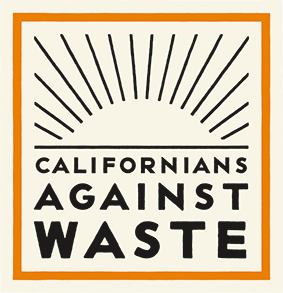CAW News Release: The Failure of Plastic Bag Recycling
FOR IMMEDIATE RELEASE
CONTACT - Mark Murray, 916-443-5422
Report Reveals the Continued Failure of Plastic Bag Recycling -- Less than 5%
By all measures, efforts to recycle single use plastic grocery bags have failed.
A comparison of data from two recent reports shows that from 2009 to 2010, a modest increase in plastic bag recycling (27 million lbs) was swamped by the substantially greater growth in plastic bag generation and disposal (220 million lbs).
Analyzing the most recent data from across the country, it appears that single-use plastic bags grew to a staggering 115 Billion in the US in 2010, and despite stepped up efforts, less than 5 percent of those bags are being recycled.
The new recycling report was released today by the Plastic Industry’s American Chemistry Council: National Postconsumer Plastic Bag and Film Recycling Report. It shows promising growth in the recycling of ‘shrink wrap’ and other plastic film, collected in the commercial sector. The report does show a modest growth in single-use plastic bag recycling in 2010, compared to 2009, but that number is dwarfed by the US EPA’s reported 220 million pound growth in plastic bag generation during the same period.
“By every measure, the recycling of single-use plastic bags is a failure,” said Mark Murray, Executive Director of Californians Against Waste. “It’s telling, that after spending all this money on a report analyzing plastic bag recycling, the Plastic Bag Industry and ACC were apparently too embarrassed to actually report the plastic bag recycling rate."
California is the only state that monitors plastic bag and film recycling and has a retailer funded plastic bag take-back opportunity at virtually every grocery store. Its latest report (2009) shows that just 3% of plastic bags generated are recycled in the state. If the reported growth rate is to be believed, the 2010 recycling rate is about 4%.
The report estimated that “bags make up 40 to 55 percent of the commingled bales purchased from retail program.” But the California report shows that plastic bags represent less than 6% of plastic film collected at retail stores. This adjustment would substantially reduce the volume of plastic bags reported as recycled versus overall mixed film.
The inclusion of plastic bags in the few curbside recycling programs that have experimented with accepting them shows that--while plastic bags represent one of the smallest fraction of materials collected--they account for a disproportionately high percentage of program costs. Estimated at less than half of 1% of the waste stream in either San Jose or Sunnyvale (two jurisdictions who banned plastic bags last year), these nuisance products continue to be a problem even after properly “disposed.”
The City of San Jose estimated nearly $2 million in annual costs to manage plastic bags during its curbside bag recycling program, with $1 million of that attributed to repairs of jammed processing machines, and over a quarter of that amount from street cleanings and contamination in compost facilities. A recent analysis from the City of San Francisco, which did not recycle plastic bags but was the first in the nation to ban them, estimated $3.1 million in costs for collection, disposal, recycling impacts, and street cleanings to manage plastic bag litter.
“This report demonstrates that pumping additional resources and public relations into the myth of recycling plastic grocery bags is doomed to fail. It’s time for the industry to cut their losses on a product that will likely be banned from the market-place before the end of the decade, and focus on the recycling of those plastic products and resin types that are likely to survive,” said Murray.
